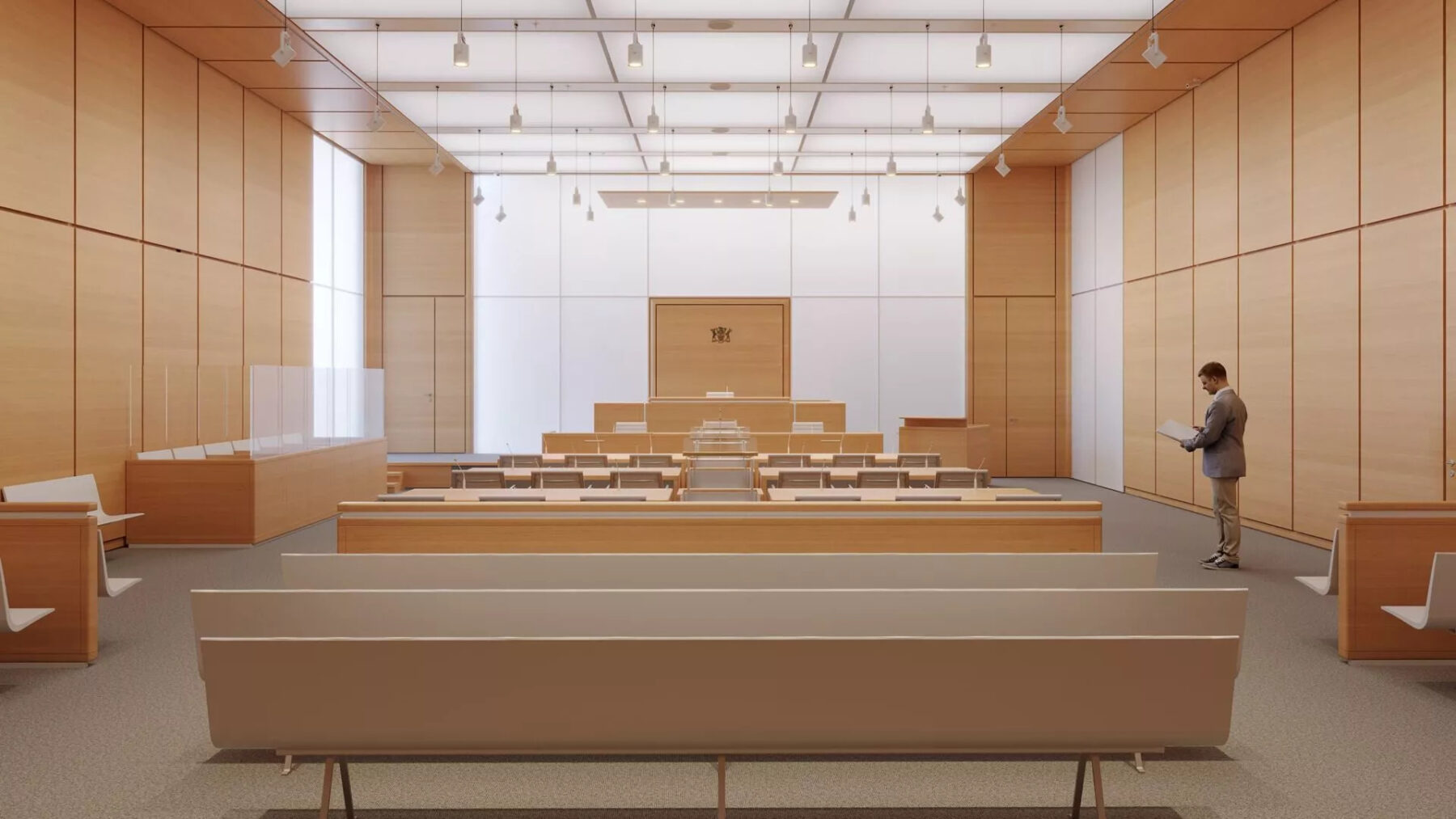Ontario’s largest courthouse is preparing to open up
The architectural team called it a ‘new standard’ for courthouse facilities.

NORR Architecture and Engineering Firm
Key Takeaways:
- The 17-storey tower features 63 courtrooms and 10 conference settlement rooms.
- The team included NORR, RPBW, EllisDon, Infrastructure Ontario and more.
- The project is now the largest courthouse in Ontario.
The Whole Story:
Work is adjourned for the Ontario Court of Justice.
The facility is now preparing to open to the public in the coming weeks.
According to the project’s architectural team, the facility represents a new standard in the evolution of courthouse facilities, providing a unique mix of specialized courtrooms, support facilities and enhanced accessibility features.
They argue that it solves the challenge of the high-rise courthouse through a welcoming light-filled facility that integrates carefully into the important civic context.
Architectural partners on the project – NORR Architects & Engineers Limited (NORR) and Renzo Piano Building Workshop (RPBW) – collaborated with EllisDon, the Ministry of Attorney General, Infrastructure Ontario, many stakeholders and the larger consulting team.
The project is the largest courthouse in Ontario amalgamating a number of Ontario Courts of Justice facilities into one location at the judicial center of Toronto’s downtown civic realm. The 17-storey tower features 63 courtrooms, 10 conference settlement rooms, along with associated support facilities. Specialty courts include drug, mental health, Indigenous and youth courts.

“The design concept is defined by a desire to reimagine the institutional building and the courthouse in particular as an integral civic component within the city that is accessible, dignified and independent,” said NORR in its announcement of the project’s completion. “The project is intentionally compact, staying well below the maximum allowable height, maintaining a respectful relationship to Osgoode Hall, a National Historic Site, and Toronto City Hall while having a presence of its own. At the lower levels the bulk of the building is pushed as far north as possible, maximizing exterior public space.”
The architecture team added that the design expresses a clear image with a simple form that is both legible and transparent. The transparency of the lower levels, in particular a 20-meter-tall atrium surrounded by a minimal cable façade, allows for a relationship to exist between the institution and the city.
A 90-meter-tall architectural mast marks the judicial precinct and aligns to the East portico of Osgoode Hall, and the northern terminus of York Street. The envelope of the tower is characterized by a layering of embossed metal panels, wood frames and low iron glass generating a materiality that is dynamic and in constant flux and is capped by a significant photovoltaic array.
“As a team we have been able to create a facility that acknowledges the significant history of the site while also looking to the future,” stated NORR.

